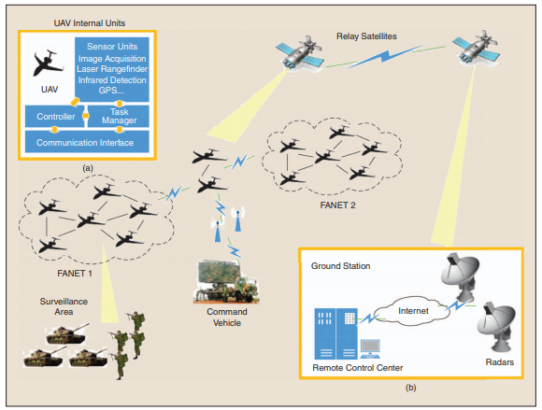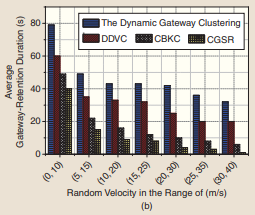The next technological advancement for drones may come from self-driving cars.
An international team of researchers has designed an unmanned-aerial-vehicle (UAV) network based on the networks used to coordinate self-driving cars. Referred to as a flying ad-hoc network (FANET), the system aims to bolster the performance and range of small drones, which are used in a variety of applications such as aerial mapping, disaster rescue, agricultural irrigation and military surveillance.
FANET is based on the Vehicular Ad-Hoc Network (VANET) wireless communication system created to help self-driving cars position themselves in relation to other self-driving cars in the area. In these systems, vehicles in the network are used as communication nodes. Similarly, in FANET, multiple UAVs are part of a cooperative system, which contains a sensor unit, a communication unit, and an information-processing unit.
However, while the structure of the two networks is similar, the nodes in a FANET are much more mobile than in a VANET.
“FANET is constituted by low-cost and low-velocity UAVs, while VANET is based on vehicles on the ground,” said Dr. Jingjing Wang, a PHD candidate at Tsinghua University. “The mobility of vehicles in VANET is confined by the road infrastructures. By contrast, small UAVs have more flexibility to construct a cooperative network in the air.”
The range and efficiency of a FANET is enhanced by the coordination and collaboration of its UAVs, which allows the network to cover more ground by spreading out while in flight. This same coordination allows UAVs to be flexible and change course when necessary, if for example a drone comes under attack during military surveillance.
FANET’s flexibility makes it more advantageous than the relay stations traditionally used to direct a single UAV. A relay station is a broadcasting system that uses communications signals to direct drones. Relay stations can be a satellite, command vehicle, or ground station.
When the communication session between a single UAV and its relay station is interrupted, the UAV becomes isolated. By contrast, FANETs remain more resilient due to the support of wireless communication gateways through select UAVs, which disseminate information throughout the network. This more resilient design allows the network to continue functioning even if a gateway’s connection is interrupted.
The gateway selection is a critical component of FANET, as each UAV has limited coverage and computational capabilities. To optimize gateway selection, the authors have developed a dynamic gateway-selection algorithm for ensuring that the gateway function in the network is sustained. If a gateway UAV goes down, another gateway UAV in the cluster will take over relaying the information.

Figure 1: Diagram of the multi-UAV network in a military setting
“The gateway drone can be viewed as a UAV-based relaying controller,” said Dr. Chunxiao Jiang, an assistant professor at Tsinghua University. “Our proposed distributed gateway-selection algorithm takes into account the restriction imposed on the number of gateways in a cooperative UAV network, while our proposed adaptive gateway-selection algorithm makes adjustments to the network based on the network’s changing topology when the UAVs are in flight.”
To test FANET and the dynamic gateway-selection algorithm, the research team ran a simulation by generating 100 small UAV nodes randomly located in a set area using a random flight-mobility model.
 Figure 2: Performance comparison in the random flight-mobility model between the researchers’ dynamic gateway clustering algorithm and gateway-selection algorithms from other researchers.
Figure 2: Performance comparison in the random flight-mobility model between the researchers’ dynamic gateway clustering algorithm and gateway-selection algorithms from other researchers.
The simulations demonstrated that the researchers’ proposed dynamic gateway clustering was capable of significantly increasing the average gateway-retention probability. They also demonstrated the network’s capability of promptly restructuring itself in order to manage relatively short gateway-retention durations.
To develop their network further, the researchers plan to incorporate a cloud computing system into FANET to store the large amounts of data collected by UAVs, which will make FANET more stable and improve the network’s processing speed.
“For next steps, we are looking to improve the stability, mobility and energy-efficiency of the FANET’s architecture,” said Lajos Hanzo, professor at the University of Southampton. “We are also looking to strengthen data security in the network, since it will be critical to ensure data is robustly protected when FANETs are used in military or business applications.”
While it is still under development, FANET could assist UAV applications conceived for both businesses and the military alike by making drone use more flexible, efficient, and reliable.
For more information on UAV networks, visit the IEEE Xplore Digital Library.





